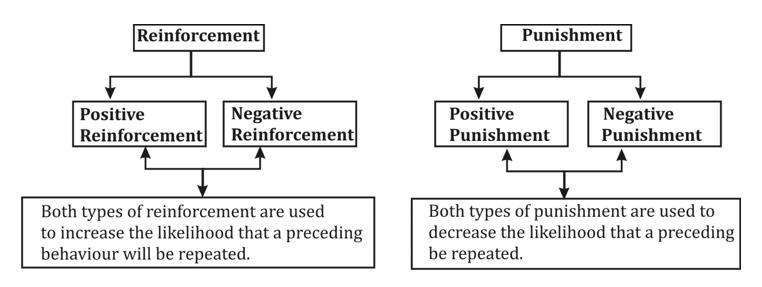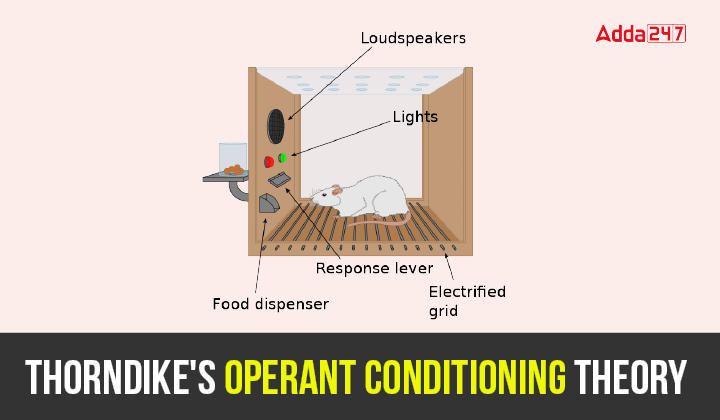Table of Contents
Thorndike’s Operant Conditioning Theory, also known as the Law of Effect, was proposed by American psychologist Edward L. Thorndike in the early 20th century. This theory focuses on how behavior is influenced by the consequences that follow it.Thorndike’s Operant Conditioning Theory laid the groundwork for future behaviorist theories, such as B.F. Skinner’s operant conditioning, which further expanded the understanding of how consequences shape behavior.
Thorndike’s Operant Conditioning Theory
Operant or instrumental conditioning is a form of learning in which the consequences of behaviour lead to changes in the probability that the behaviour will occur. Thondike (1874 – 1949) was the pioneer in studying this kind of learning. His famous formulation of Law of Effect lies at the heart of the operant conditioning. The Law of Effect states that:
“Behavior that brings about a satisfying effect (reinforcement) is apt to be performed again, whereas behavior that brings about negative effect (punishment) is apt to be suppressed.” (Morris & Maisto, 2001)
Types of Reinforcement and Punishment
Reinforcement is a consequence that increases the probability that a behaviour will occur. On the other hand, punishment is a consequence that decreases the probability a behaviour will occur. Put it another way, reinforcement will strengthen a behaviour while punishment will weaken a behaviour. There are 2 forms of reinforcement and punishment as shown in figure.

Take note that when something is added or presented, the process of learning is called positive and when something is removed or taken away, the process of learning is called negative.
Reinforcement and Punishment
| Form of consequence | Description | Example |
|---|---|---|
| Positive reinforcement | Receiving something pleasant will increase behaviour occurrences. | A student is praised for asking question. Subsequently, the student asks more questions. |
| Negative reinforcement | Removing something unpleasant will increase behaviour occurrences. | A son who is tired of hearing his father’s nagging will does his homework. He does the homework to remove the nagging. |
| Positive Punishment | Receiving something unpleasant will decrease behaviour occurrences. | If a teacher frowned when his student asked a question, the student would be less likely to ask question again. |
| Negative Punishment | Removing something pleasant will decrease behaviour occurrences. | A misbehaving student is removed from the class. |
Schedule of Reinforcement
Reinforces are more effective when they are given as soon as possible after a student performs the target behaviour. In continuous reinforcement like this, a student learns very rapidly but when the reinforcement stops, the behaviour decreases rapidly too. Therefore, the schedule of reinforcement was developed. The schedule will determine when a behaviour will be reinforced. There are 4 types of schedule of reinforcement, they are fixed – ratio schedule, variable – ratio schedule fixed, fixed – interval schedule, and variable – internal schedule.
| Schedule | Behavior |
|---|---|
| Fixed – ratio schedule |
|
| Variable – ratio schedule fixed |
|
| Fixed – interval schedule |
|
| Variable – internal schedule |
|
Download Thorndike’s Operant Conditioning Theory PDF
The direct link to download Thorndike’s Operant Conditioning Theory PDF has been mentioned below. Candidate an download the Thorndike’s Operant Conditioning Theory PDF in Hindi and English Medium. The clickable link for Thorndike’s Operant Conditioning Theory has been mentioned below.
| Download Thorndike’s Operant Conditioning Theory PDF | |
| In English | Download Thorndike’s Operant Conditioning Theory PDF |
| In Hindi | Download Thorndike’s Operant Conditioning Theory PDF |




 MP TET Varg 3 Notification 2025 Out, Che...
MP TET Varg 3 Notification 2025 Out, Che...
 CG Vyapam Pre Deled Final Answer Key 202...
CG Vyapam Pre Deled Final Answer Key 202...
 CG Vyapam Pre DElEd Result 2025 Out, Dir...
CG Vyapam Pre DElEd Result 2025 Out, Dir...




